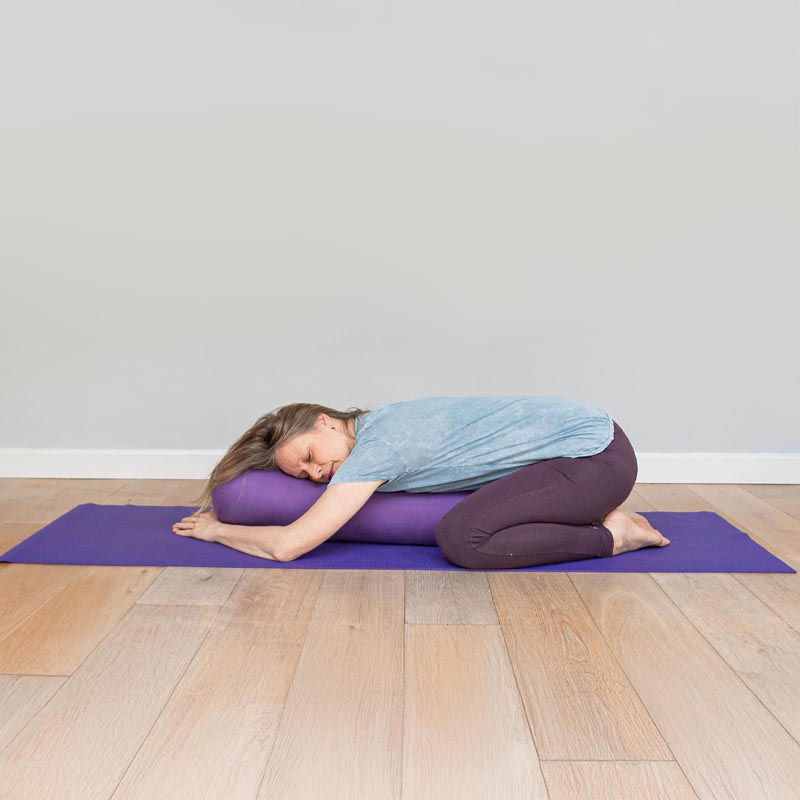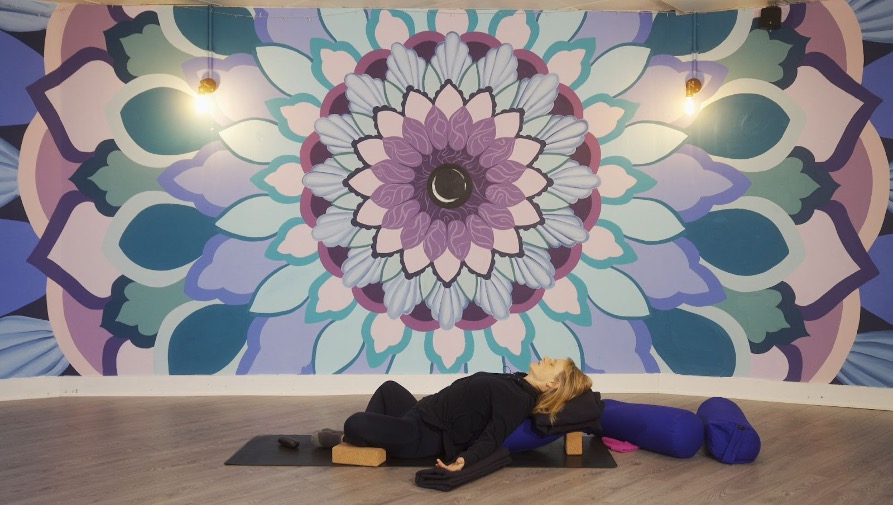Yin yoga has moved from niche to mainstream, meeting a growing need for stillness in an ever-moving world. While yin yoga is rooted to some degree in ancient yogic practices, it is a relatively recent practice. In this blog find out more about its recent and more ancient history.
Yin yoga has gained popularity over the last decade, now being found on most yoga studio schedules. I recall being introduced to Yin yoga sometime around the early 2000’s and having to trek across London to attend classes, mostly at Triyoga or The Life Centre in those days. I remember teachers such as Norman Blair and Amanda Wright offering Yin yoga during those early days of the practice in London. The classes were busy, but it was very much a niche offering.
I was working in the city at that time, in a demanding job while also being a single mother to two teenagers. I was permanently exhausted and under pressure from the day-to-day stressors. The practice offered me solace and space to connect with myself in what was a very fast-paced life.
Yin Yoga is a relatively recent practice that dates back to the 1970s and blossomed in Los Angeles. It draws its roots from a number of traditions: yoga, traditional Chinese medicine (TCM) and Daoist philosophy. Buddhist and mindfulness practices are often interwoven into yin teachings. The practice serves as a counterbalance to more yang-based activities and focuses on long-held, primarily mat-based postures that encourage stillness.
Seasons of Yin Yoga Teacher Training – 30 Hours
Step into the heart of Yin yoga through the lens of Daoist philosophy and the cycles of nature. This immersive 5-day training blends seasonal sequences, meridian theory, anatomy, and yoga nidra, equipping you to teach Yin classes and workshops year-round. Suitable for teachers and dedicated practitioners alike, this course offers a rare chance to learn through rest, replenish your energy, and reconnect with your purpose.

The popularity of yin yoga
There are numerous teachers around the world who have contributed immensely to spreading the practice and love of Yin yoga across the global yoga community. As modern yoga has moved towards more dynamic styles, incorporating more standing and active postures, Yin yoga has gained in popularity as a counterbalance.
People come to Yin for many reasons—to relax, to stretch, to complement a yang activity such as dynamic yoga, running, or cycling, or as an entry point into meditative practices. But beyond the physical benefits, Yin yoga offers something deeper. The practice invites stillness, patience, and introspection, providing a much-needed antidote to the fast pace of modern life. It is a space where we can soften, surrender, and become more comfortable with being present, both in our bodies and in our thoughts.
As the world continues to speed up, Yin yoga offers a reminder of the importance of slowing down. More than just a complement to other practices, it stands on its own as a path to self-awareness and offers balance, whether approached for its physical, energetic, or meditative aspects.
The Roots of Yin Yoga in Traditional Yoga
From a postural perspective, Yin yoga traces its roots to Hatha yoga. In older scriptures such as the Hatha Yoga Pradipika, the number of postures is far fewer than in contemporary yoga, and many of them are seated. One of the aims was to develop the ability to remain in postures for extended periods, ultimately preparing the practitioner for stillness in contemplation and meditation.
The postures have been renamed in Yin yoga. This was done to make it clear that when postures are referred to by their Yin names, they are intended to be held for longer durations than in other styles. The Yin terminology differentiates the practice from more dynamic forms of yoga.
However, the idea of holding postures for prolonged periods is not new—it has been practiced for centuries.
Overlaying TCM, Buddhist practices and mindfulness
Paulie Zink integrated Daoist theory into the practice of yoga. While yoga philosophy and the Ayurvedic system share some similarities with TCM and Daoism, there are also significant differences between them. Yin yoga combines TCM principles with static yoga postures, which were further explored in Sarah Powers’ book Insight Yoga.
The stillness of Yin yoga creates a perfect space for meditative practices, including Buddhist meditation and mindfulness techniques.
Teachers have taken different approaches to the practice—some integrate chakra theory into Yin yoga, while others focus on an anatomical approach, such as functional Yin yoga.
Leading Teachers of Yin Yoga
Let’s look at some of the leading teachers of yin yoga and their contributions to the practice.
Paul Grilley and Paulie Zink
Paul Grilley is a leading Yin yoga teacher who has been instrumental in spreading and popularising the practice.
He was introduced to Daoist yoga by Paulie Zink, a yoga teacher and martial arts practitioner and master. Zink combined yoga with Daoist philosophy, integrating TCM and the Five Elements Theory into his yoga practice.
Paul Grilley has also studied extensively with Dr. Hiroshi Motoyama, a Japanese scholar and author. Dr. Motoyama researched the theory of the chakras and meridians, writing on the subject and publishing “Theories of the Chakras”.
Sarah powers was initially introduced to Yin yoga by Paul Grilley. She is the co-founder of the Insight Yoga Institute along with her husband Ty Powers. Her teachings incorporate Buddhism, Daoism, Transpersonal Psychology and Yoga. Sarah Powers has been a key figure in sharing Yin yoga worldwide and offers specialized teacher training programs.
Bernie Clark studied Yin yoga with Sarah Powers and Paul Grilley. He is the author of Yinsights and the Complete Guide to Yin Yoga, amongst other books. He also conducts teacher training courses in Yin yoga and anatomy.
This article was written for MoreYoga Teacher Training, by Erika Shapiro, you can check out her full website – here



Recent Comments